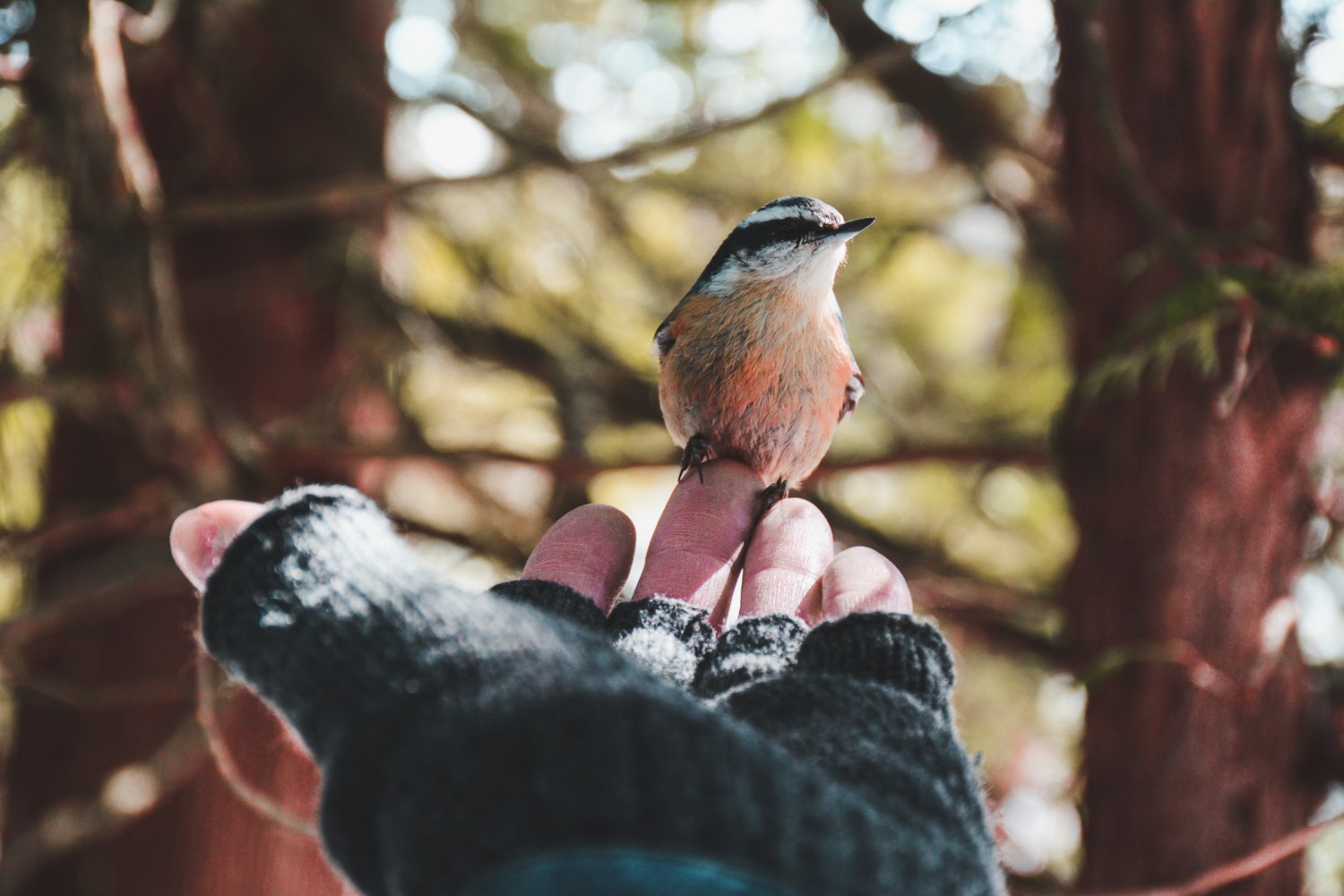
‘You don’t think of protecting something you don’t love’: reconnecting with nature could trigger a wider movement
It’s called the Bird-in-the-Hand phenomenon, and it’s like magic – especially to children.
Like the opening up of a spring tulip, you can watch a lifelong passion for nature emerge before your eyes, triggered by nothing more than thin talons gripping the soft flesh of an index finger.
“The expression on kids’ faces and adults when they hold a bird for the first time, it’s just incredible,” says Bruce Murphy, president of the Ontario Bird Banding Association and director at the Hilliardton Marsh Research and Education Centre. The centre, located in the province’s green northern reaches, about three hours northwest of Sudbury, is an ornithological heaven.
Growing up in Toronto, Murphy had his own “bird-in-the-hand” moment. It came during a Grade 6 field trip to the Toronto Islands.
“When I was there they took us out to do some bird banding,” he recalls. “They put up some nets and caught a chickadee and suddenly something tumbled into place for me. I thought this is what I want to do.”
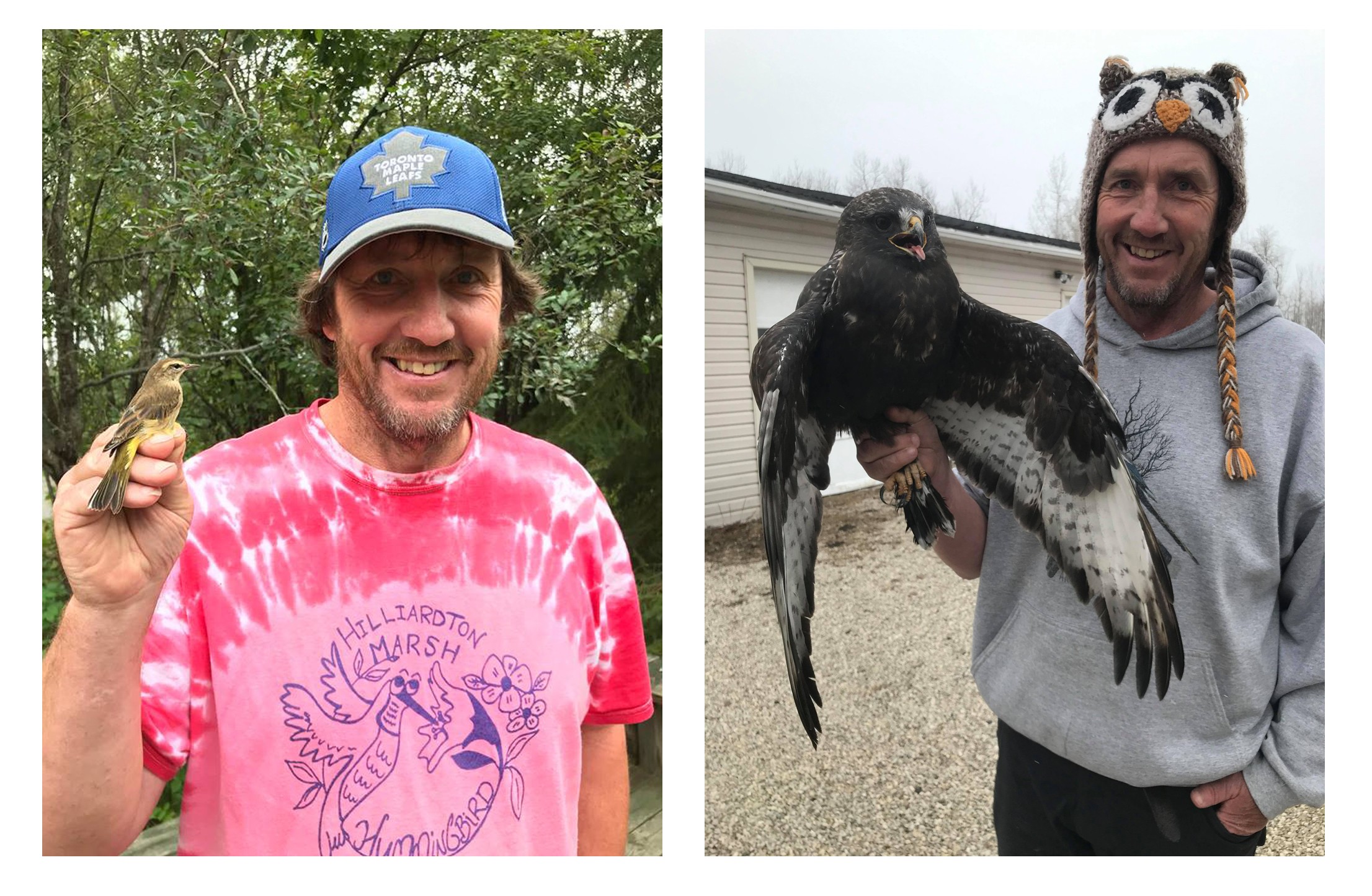
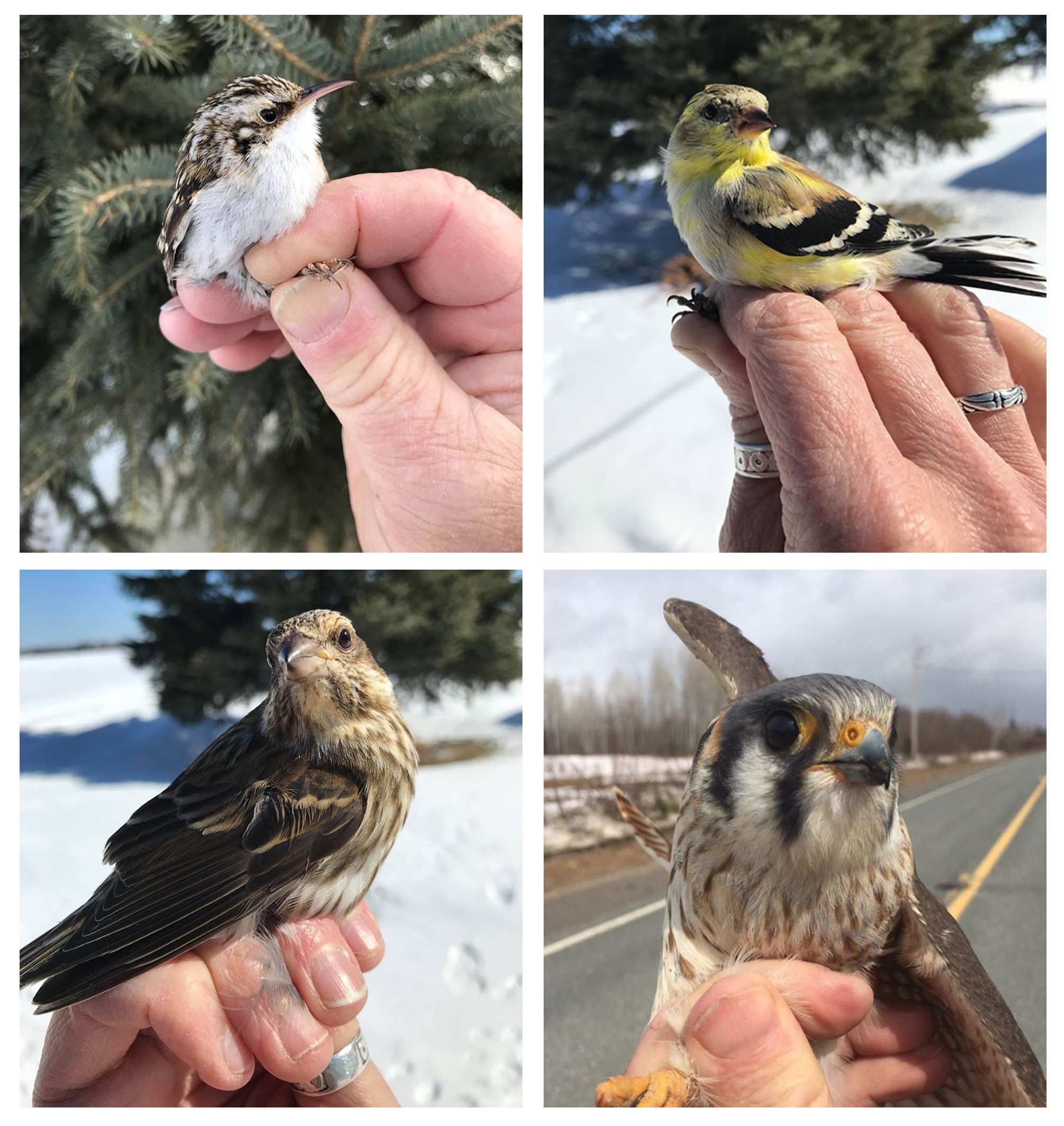
Bruce Murphy, president of the Ontario Bird Banding Association has long taught and encouraged people to seek the benefits of nature.
And indeed, he did it. Along with teaching high school in New Liskeard, Murphy started a program to introduce students to the outdoors and he bands birds practically year round – usually about 12,000 annually at the marsh with the help of volunteers. A couple years back, the Hilliardton Marsh surpassed its 100,000th bird banded. It’s a significant feat that has nationwide implications for informing conservation efforts for all types of species, from songbirds to owls to hummingbirds.
This year, unfortunately, the birds are flying solo at the marsh.
“We’re kind of suffering this year because the marsh, we had to shut it down,” Murphy says.
The Hilliardton Marsh is not alone. Everything from city playgrounds to Ontario’s 330 provincial parks have been shuttered in the face of the global pandemic, leaving people with few greenspaces to enjoy, and next to no weekend escapes.
In many places, the silent streets have blurred the lines between the urban and natural environments, with wildlife slowly beginning to take back what is rightfully theirs. Just last weekend, Peel region was in an uproar when video footage surfaced on social media purporting to show an alligator swimming in a local pond. Peel police were called in to deal with the giant reptile, which actually turned out to be a busy beaver.
The public’s inability to identify one of Canada’s national symbols is indicative of a society that, by-and-large, is out of touch with the natural world – a disconnect that might only grow worse with COVID-19 disrupting daily life. People are trapped inside, and Canadians are a stressed out bunch.
To pass the time, many people have tried to pick up new hobbies or revisit old passions. The great indoors isn’t proving to be so great.
This does not mean one needs to ignore the outdoors. In fact, nurturing a passion for the natural world and reconnecting with our greenspaces during this global pandemic could actually ease stress and have lasting ramifications for our planet.
Right now, the value of the humble window cannot be ignored. These portals of glass offer crucial natural light, and views of the empty world beyond. Fewer people, less traffic, and the reduced abundance of many other human creations, has allowed the natural world to take back what is theirs. The stories of nature returning are legend: deer walking through underground passenger tunnels in Japan, wild boar on the streets in Barcelona, turkeys in the suburbs of Oakland, California, and goats roaming the roads of northern Wales.
The globe has been filled with tales of brave animals roaming into quiet neighbourhoods and city streets. Around the time of the Spring Equinox, Toronto residents were captivated by photos on social media of a fox and her kits emerging from beneath a popular waterfront boardwalk.
It seems the city is not so empty after all.
Take a look out your own window. Extend your eyes beyond the familiar sites of your yard or your street. Look closer. There are trees starting to bud, grass starting to green, and birds returning after long winters spent south.
Have you noticed these harbingers of spring: the robin with its brown and burnt orange plumage, and finches flitting from branch to branch, and an assortment of red-winged blackbirds, crows, ravens, and sparrows. They’re all out there, if you spend a few minutes and observe. As the famed naturalist Henry David Thoreau wrote, “The question is not what you look at, but what you see.”
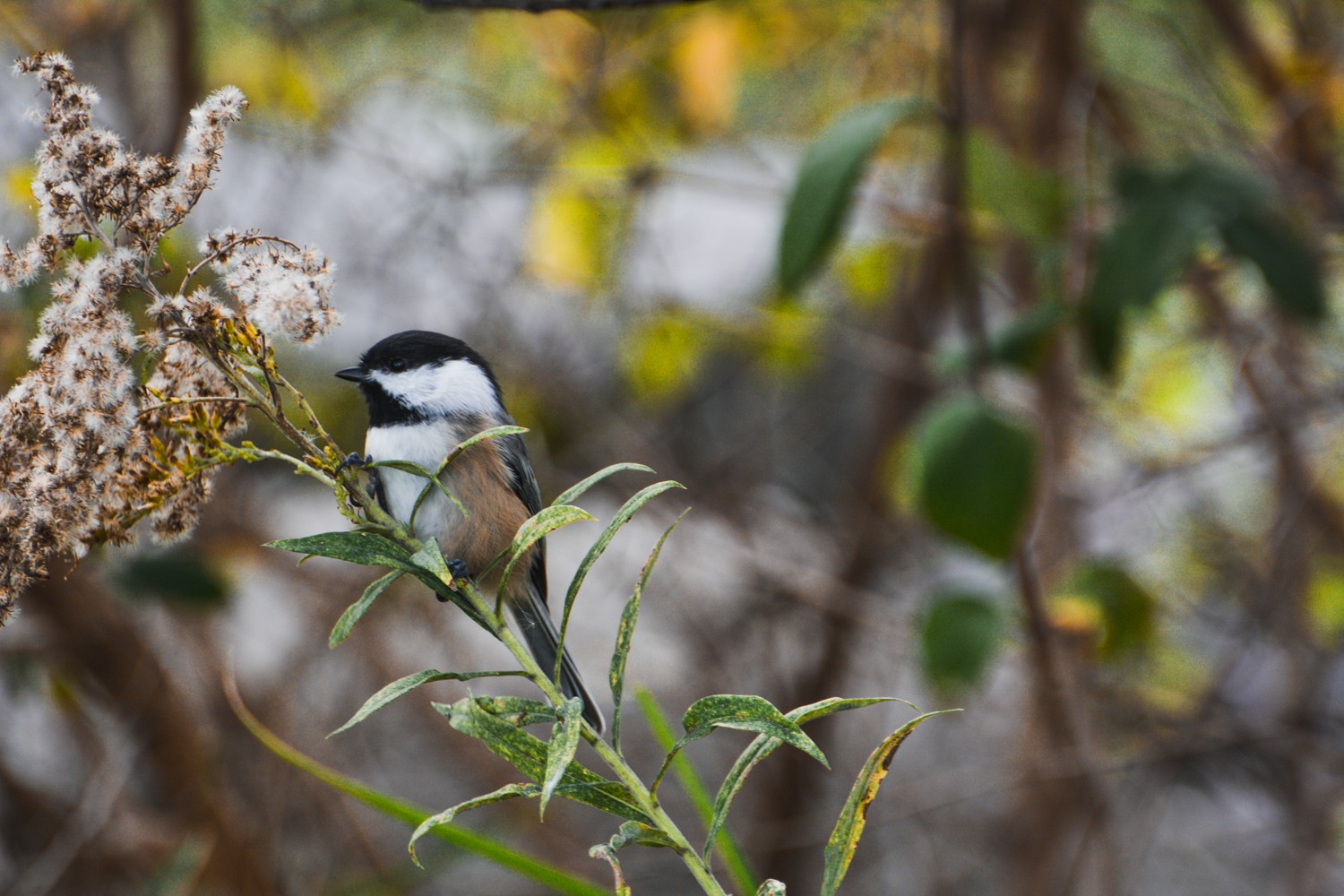
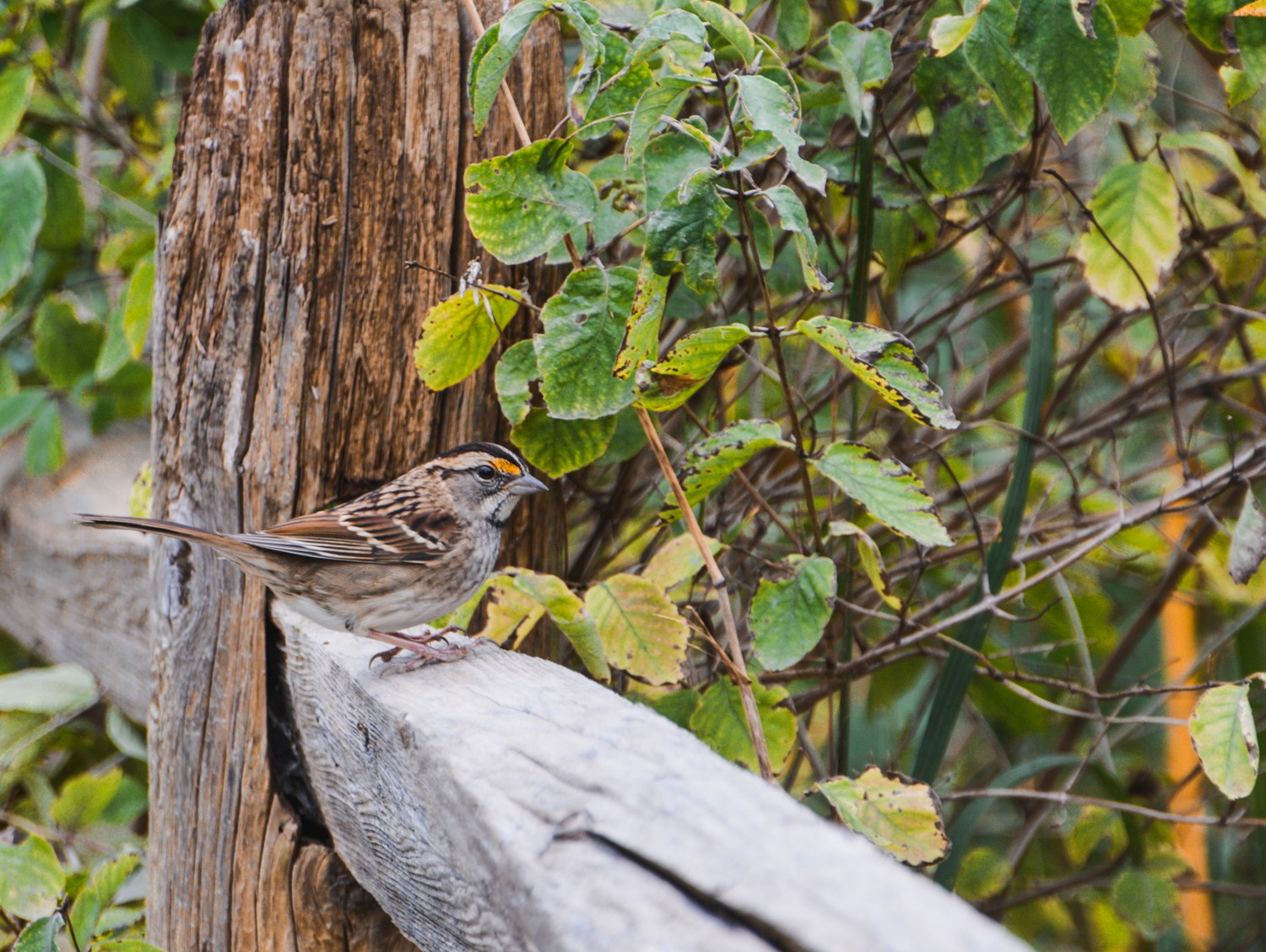
While our avian neighbours roam the skies, we are supposed to limit our trips outdoors to stamp out the spread of the novel coronavirus. Many of us are stuck on the wrong side of the window from where we’d like to be.
The endless stream of COVID-related news, combined with an inability to relieve stress in the most common ways — hanging out with friends, visiting family, or simple leisure activities like going to the gym — have created significant mental strain.
The problem is: this social isolation might not be brief. Prime Minister Justin Trudeau has said many times that this “new normal” is not going to be completely erased until a vaccine is developed, something that experts said could take 12 to 18 months. Yes, Ontarians are in for the long haul.
Studies already show our population needs to find new ways to cope with increased stress and anxiety.
A Statistics Canada online survey released in early April sought to gauge the worries and behaviours of Canadians resulting from the COVID-19 pandemic.
One third of those surveyed said they were “very or extremely” worried about their own health, and one-half of respondents were worried about the health of someone else in their household. Additionally, during a recent tele-town hall meeting hosted by the City of Brampton and the Region of Peel, 70 percent of callers said they wished to see more mental health support available in the region.
It comes as no shock to learn that the survey found people spending more time watching television or surfing the internet while physically distancing themselves in their homes. This is known to crank up anxiety. If they shut off the technology, a small bit of relief can be found right outside their windows.
In 2017, a study completed by the University of Exeter, the British Trust for Ornithology and the University of Queensland, made a fascinating discovery: connecting the presence of bird life in a person’s neighbourhood with lowered stress levels.
The goal was to fine-tune what has widely become accepted as fact in our hyper-anxious world: getting outside is good for you.
The researchers wanted to learn exactly what aspects of the outdoors, particularly in urban environments, have the ability to lower stress, anxiety and depression levels. The study showed mixed results, but did find the presence of trees and birds correlated with lower levels of all of the above. Birds have a calming effect.
“Given that most people cannot distinguish between species, benefits may be provided through directly experiencing abundance, with richness contributing when people can see multiple species within a relatively small timeframe, such as around a feeder,” the study found.
It’s a valuable insight for both parent and child. While the Stats Canada survey found elevated stress among adults, kids are also feeling the strain. Since the lockdown, calls to Kids Help Phone have more than doubled compared to this time last year.
Some of that anxiety might quickly get lowered by simply purchasing a bird feeder. Or, if you don’t want to visit a store, check out one of the many online live streams set up by the Cornell Lab of Ornithology.
For Murphy, birding is unlike any of the activities young children and their parents get up to in our urban environment. Parents are often spectators to their children’s lives, whether it’s through sports or school activities.
Birding is different. Murphy says it's an intergenerational activity.
“It doesn’t matter the name of the birds, if you set out a feeder and they start getting birds coming they can figure that out later, the kids will just get excited to have birds,” he says.
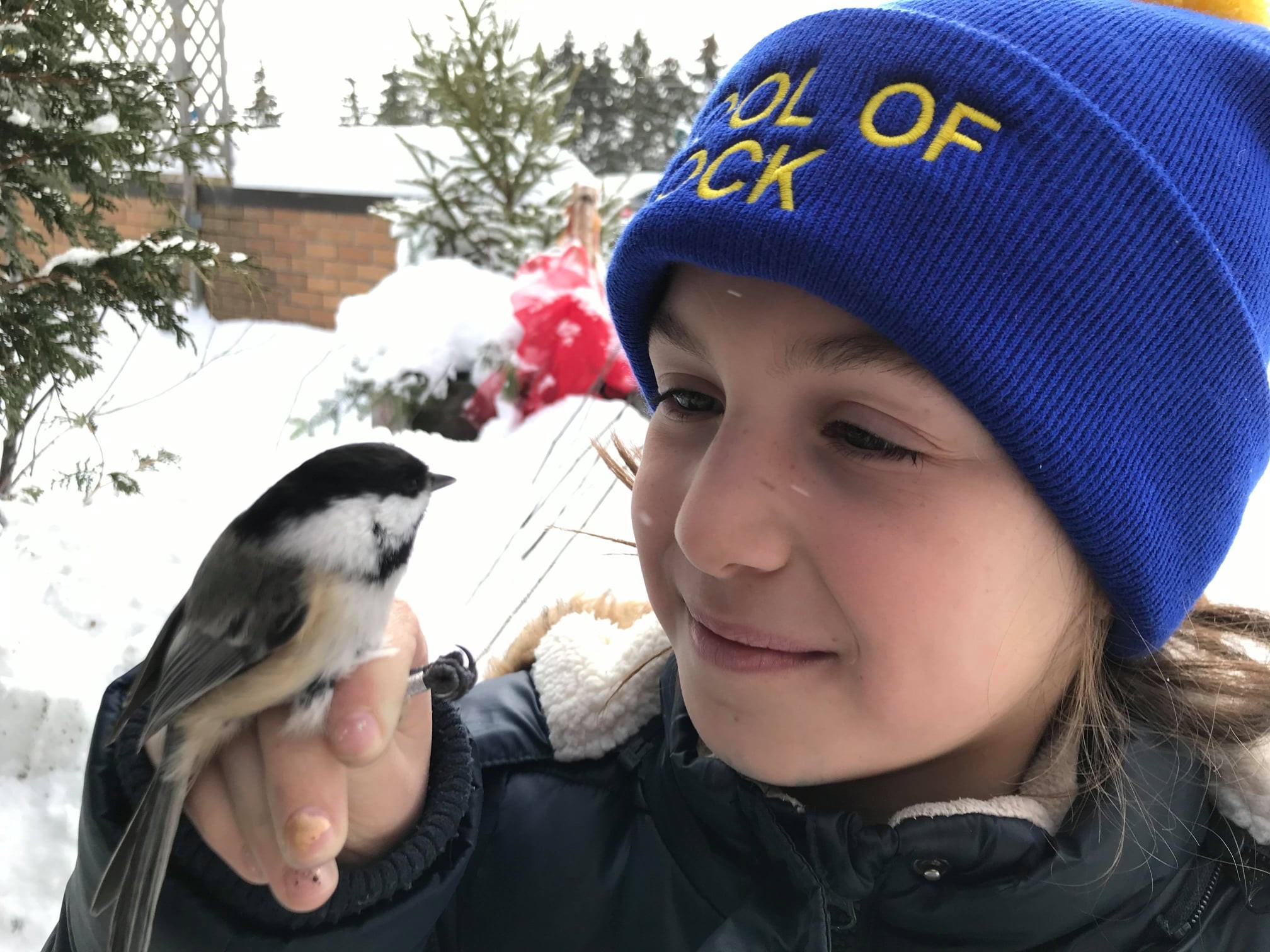
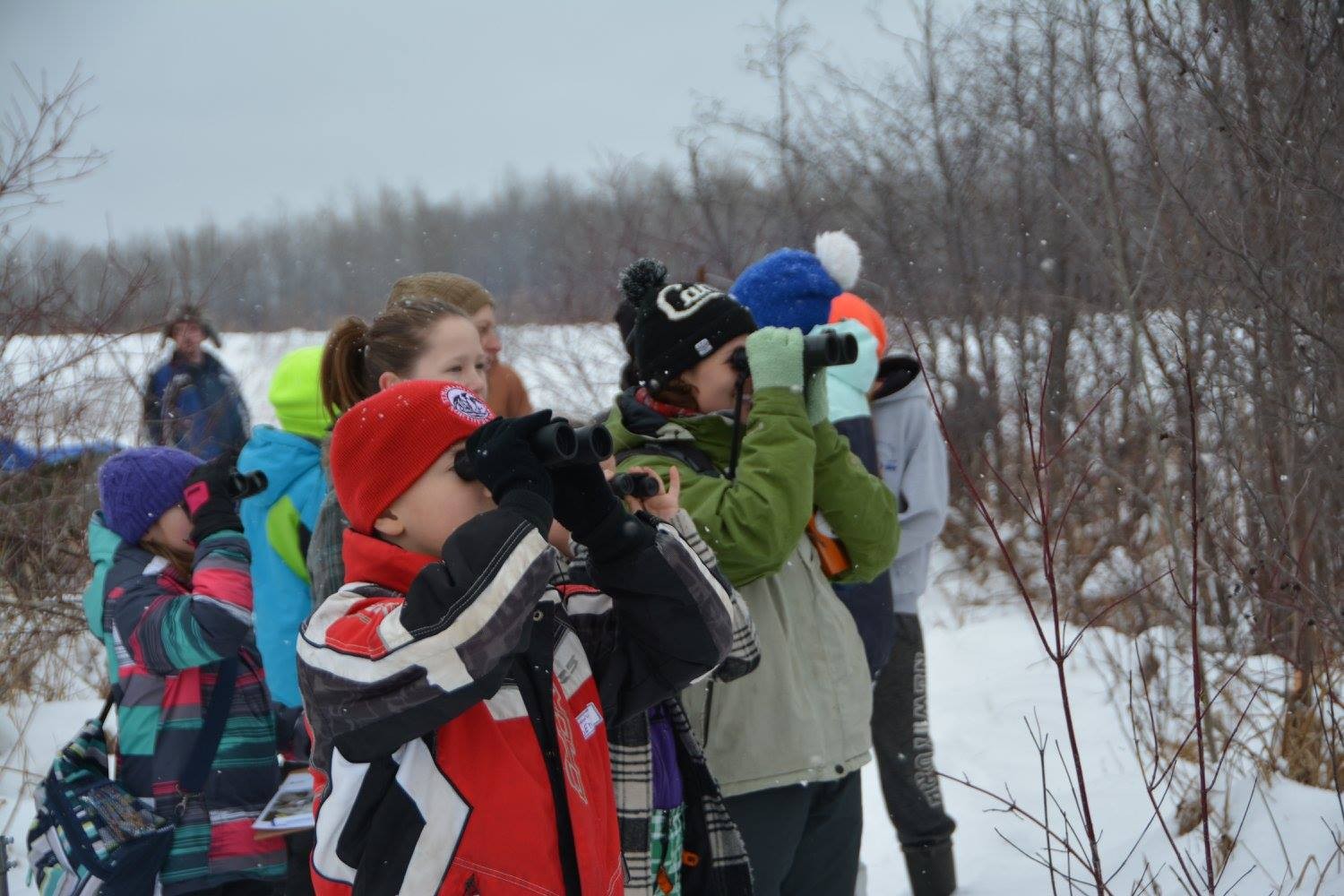
Bird watching is an activity parents can enjoy right alongside their kids as opposed to just spectating.
In our hyper-technical world, getting a kid to sit calmly beside a window for more than 15 minutes to watch a bird feeder may seem impossible. Or it may be easier than one thinks.
There are plenty of examples during this pandemic of humans becoming fascinated with all the life outside of our doors.
The internet buzzed early in the lockdown period when clips of penguins roaming the empty halls of the Chicago Aquarium went viral. The same for dolphins and swans “returning” to the canals of Venice.
People are hunting for bits of good news, and it’s no coincidence that videos of animals give many of us joy.
The pandemic is slowly reshaping us and our place in this world with nature’s creatures.
“You don’t think of protecting something you don’t love. So, if you start loving nature, you’ll start to be more concerned about it and you’ll be more likely to support things that are going to protect it,” Murphy says.
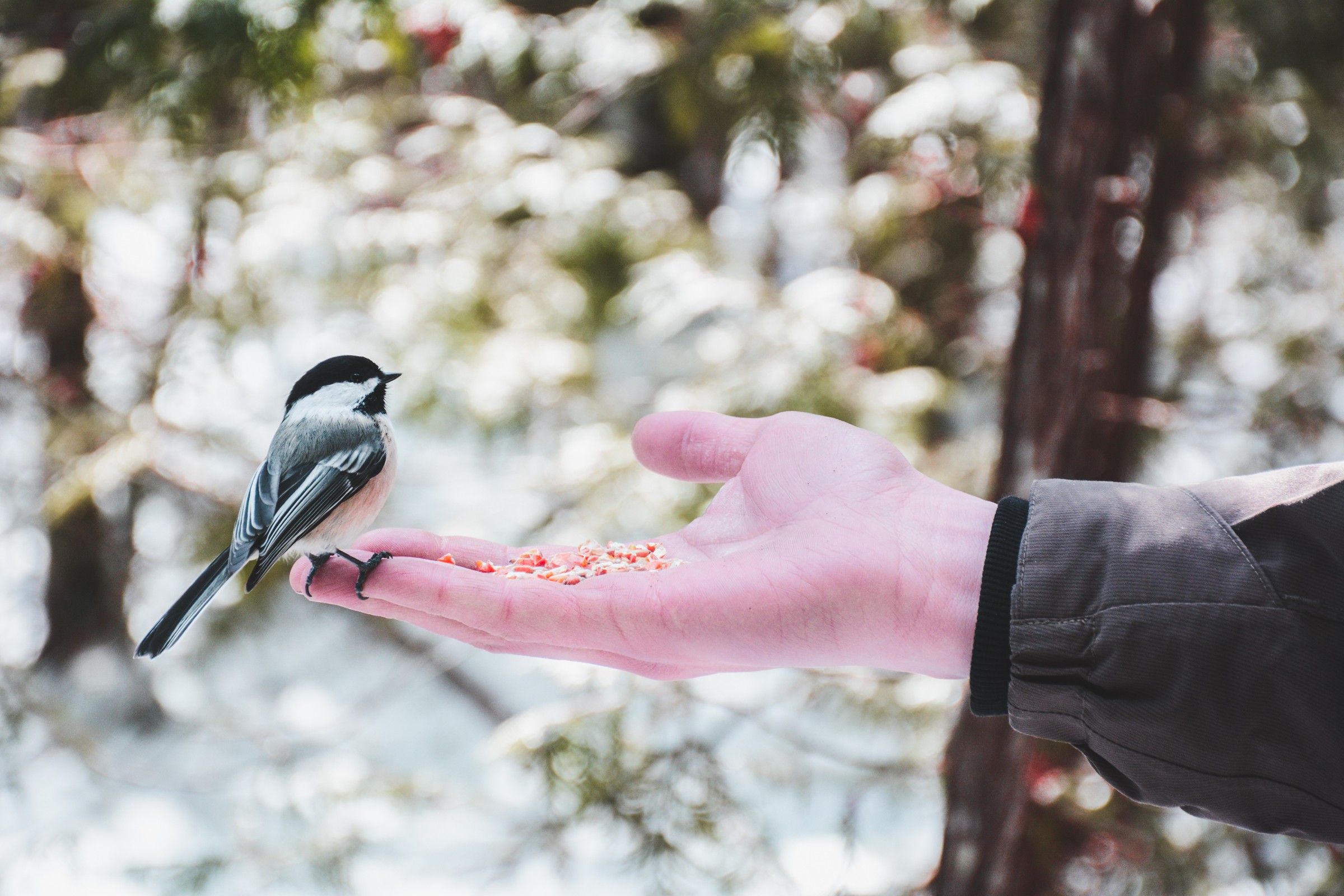
"You don't think of protecting something you don't love."
In 2015, the Journal of Wildlife Management published a study which found birdwatchers and other outdoor enthusiasts were four to five times more likely than non-recreationists to engage in conservation behaviours, including donating to wildlife and other ecological causes, protecting habitat, advocating for wildlife and participating in local environmental groups.
In Canada, bird populations have decreased by 12 percent since 1970, mainly due to the loss of grassland and wetlands needed for breeding. Some of the largest declines are seen in migratory shorebirds. It isn’t just Canada, though. New scientific reports published last year document the startling loss of biodiversity, mostly due to climate change. Over one million species are at risk, and almost a quarter of species in incredibly biodiverse areas like the Galapagos could be lost due to climate change, even if emissions are reduced to the Paris Accord targets.
Despite this, councils in Brampton, Mississauga and Caledon are still making decisions that could greatly degrade this region’s natural world. The proposed GTA West Highway that skirts Brampton and Caledon is just one example. It’s planned to run directly along the perimeter of the provincially significant Greenbelt. It’s a dire consequence for many forms of wildlife, some of them being protected species.
A number of protected animals under Ontario’s Endangered Species Act call this area home, including a long list of amphibians, insects, birds and fish, from the Jefferson salamander to the Henslow’s sparrow (both endangered).
Environmental Defence and some local organizations in Caledon are beginning to gear up to fight this development, and they could use all the help they can get.
Making decisions with the planet in mind can not only benefit the animals we share it with, but can also be fiscally responsible.
The University of Exeter study extolled the benefits of neighbourhood birds and trees, but also found a strong correlation between the level of tree cover to reduced instances of depression.
In Europe, the price tag for anxiety and mood disorders like depression is $187.4 billion annually. By simply planting more trees in new developments, the positive impacts on the economy could be startlingly significant.
“Although the causes of poor mental health are diverse, a simplistic calculation would be that if minimal levels of neighbourhood vegetation cover were met, it has the potential to contribute toward an annual saving of up to £0.5 billion and £2.6 billion per year for depression and anxiety alone. Doubtless, the financial implications are marked,” the study states.
The PC government is currently looking at doing the exact opposite.
Bill 108, the More Homes, More Choices Act, has been criticized for a myriad reasons for being too friendly to the development industry, a condemnation that has followed Premier Doug Ford even before he became Premier, having been caught on hidden camera promising a room of developers he would open up the Greenbelt for development.
Bill 108 will dramatically reduce the amount of greenspace developers will be required to include in future developments, which means less land for parks and more for developers to build houses and condos on.
In Ontario, Ford has made fiscal responsibility a priority. He's also regularly talked about his plans for mental health. Why not embrace the opportunity to solve two problems in one simple step?
Murphy remembers a time when people got excited about birds. When he was a child, a neighbour would call to tell him about the presence of a Northern Cardinal in their backyard. When asked why people are so fascinated with birds, he can’t say.
Maybe it’s because they’re “kind of predictable and unpredictable at the same time,” he says.
He hopes people stuck inside because of pandemic, will emerge with a new found respect for their neighbourhood green spaces, and kids and parents will do more nature stuff – especially birding, and people going to parks.
“There might actually be a little spike in people’s concern and putting money into programs that help nature?” he says.
Feeling cooped up?
Perhaps we should look skyward for some relief?
Email: [email protected]
Twitter: @JoeljWittnebel
COVID-19 is impacting all Canadians. At a time when vital public information is needed by everyone, The Pointer has taken down our paywall on all stories relating to the pandemic to ensure every resident of Brampton and Mississauga has access to the facts. For those who are able, we encourage you to consider a subscription. This will help us report on important public interest issues the community needs to know about now more than ever. You can register for a 30-day free trial HERE. Thereafter, The Pointer will charge $10 a month and you can cancel any time right on the website. Thank you.
Submit a correction about this story


